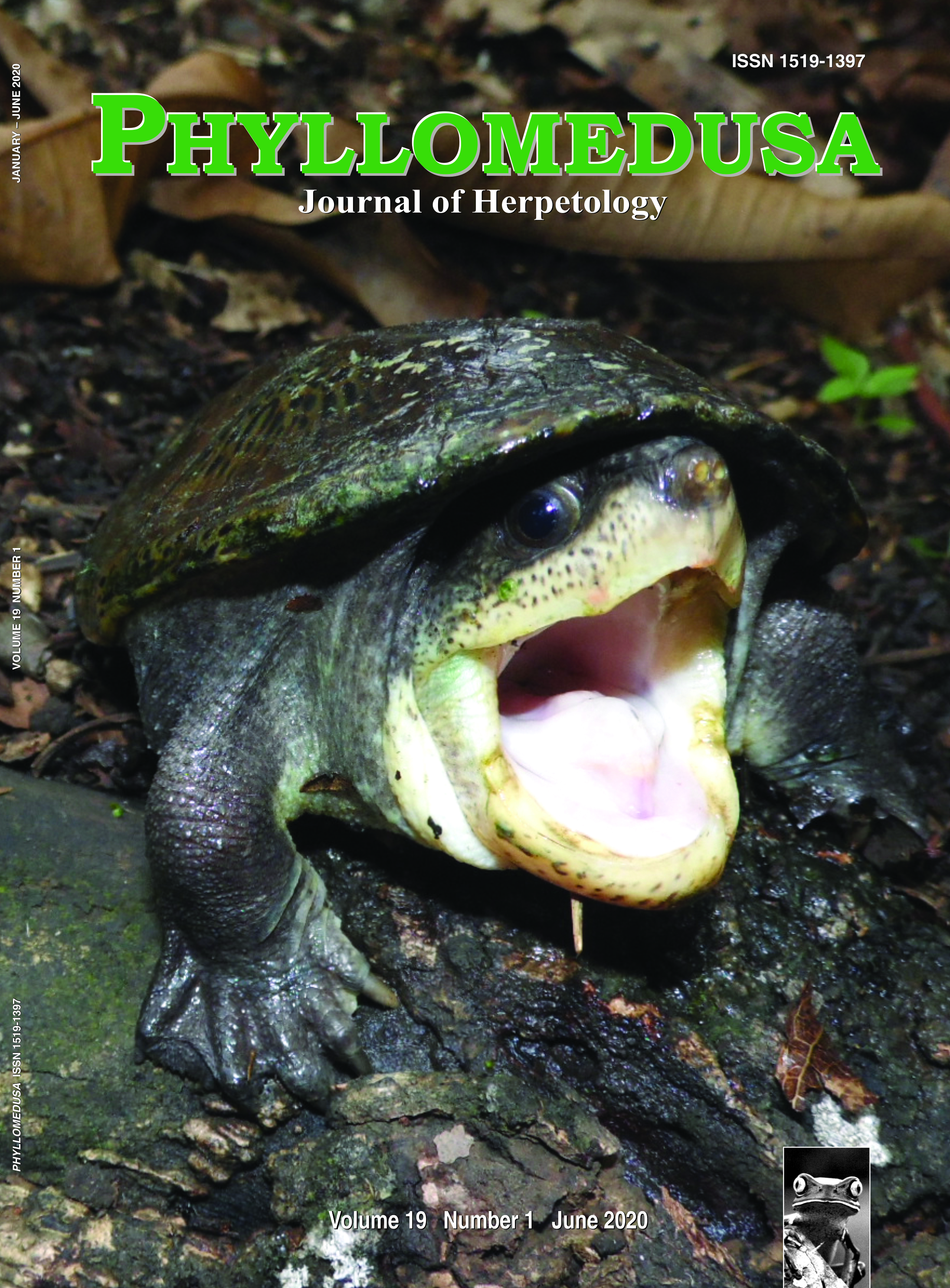Causes of embryonic mortality in Espadarana prosoblepon (Anura: Centrolenidae) from Costa Rica
DOI:
https://doi.org/10.11606/issn.2316-9079.v19i1p83-92Keywords:
Egg clutch, Emerald Glass Frog, hatching success, predationAbstract
Causes of embryonic mortality in Espadarana prosoblepon (Anura: Centrolenidae) from Costa Rica. Members of the family Centrolenidae—commonly known as “glass frogs”—exhibit arboreal egg-laying behavior, depositing their clutches on riparian vegetation. Few studies have investigated specific causes of mortality during embryonic stages, perhaps the most vulnerable stage during the anuran life cycle. The Emerald Glass Frog, Espadarana prosoblepon, was used as a case study to investigate the causes of embryonic mortality in a species with short-term (i.e., less than 1 day) parental care. The specific sources of mortality of eggs of E. prosoblepon were quantified and overall rates of survival (hatching success) were estimated. Nineteen egg clutches were transferred from permanent outside enclosures to the wild. Clutch development was monitored daily until hatching; five mortality causes were quantified: desiccation, failure to develop, fungal infection, predation, and “rain-stripped.” The main causes of mortality were predation (often by katydids and wasps) and embryos stripped from the leaf during heavy rains. The results were compared to those of previous studies of centrolenids exhibiting parental care, and discussed in the context of the importance of the natural history data for these frogs with regard to understanding the evolutionary history of parental care in glass frogs.



 Impact Factor (JCR): 0.400
Impact Factor (JCR): 0.400 CiteScore: 1.0
CiteScore: 1.0